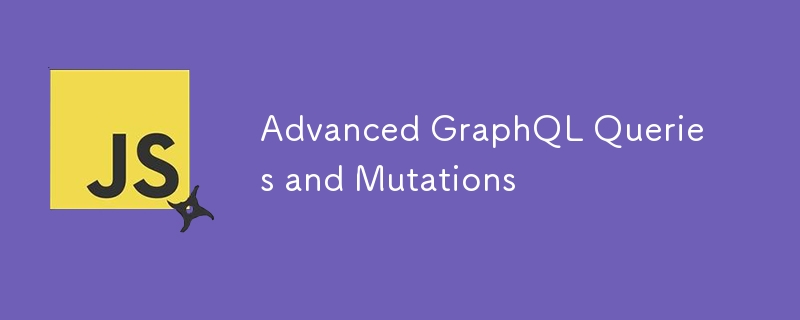

GraphQL is an open-source query language used for API development. It provides a more efficient way of fetching data from a server compared to traditional RESTful APIs. With its advanced features, it allows developers to write complex queries and mutations to retrieve and manipulate data in a more flexible manner. In this article, we will discuss the advantages, disadvantages, and features of advanced GraphQL queries and mutations.
Reduced Overfetching and Underfetching: With traditional RESTful APIs, developers often end up receiving more or less data than needed. But with GraphQL, developers can specify exactly what data they want, reducing overfetching and underfetching.
Multiple Data Sources: With advanced GraphQL queries, developers can merge data from multiple sources into a single query. This reduces the number of round trips needed to get data from different sources, making the application more efficient.
Strongly Typed: GraphQL uses a strict type system, which ensures that the data being requested matches the expected type. This helps in catching errors at compile time, making the code more robust.
Learning Curve: Compared to traditional REST, GraphQL has a steeper learning curve, as it requires understanding the query language, schema, and resolvers.
Caching: Caching with GraphQL can be tricky, as queries can be highly dynamic. This can lead to unnecessary cache retrieval or updates, affecting performance.
Approaches for Data Manipulation: GraphQL offers two approaches for data manipulation: mutations, for creating, updating, or deleting data, and subscriptions, for real-time updates and push notifications.
# Example of a GraphQL Mutation
mutation UpdateUser($id: ID!, $newEmail: String!) {
updateUser(id: $id, email: $newEmail) {
id
name
email
}
}
# Example of a GraphQL Subscription
subscription {
userAdded {
id
name
}
}
Introspection: GraphQL offers introspection, where developers can query the API to retrieve information about the schema and types, making application development more efficient.
# Example of GraphQL Introspection Query
{
__schema {
types {
name
}
}
}
In conclusion, advanced GraphQL queries and mutations offer significant advantages in terms of efficiency, flexibility, and data manipulation. However, it also has its limitations, such as a steeper learning curve and challenges with caching. Nonetheless, with its advanced features, GraphQL has become a popular choice for API development among developers.
The above is the detailed content of Advanced GraphQL Queries and Mutations. For more information, please follow other related articles on the PHP Chinese website!




